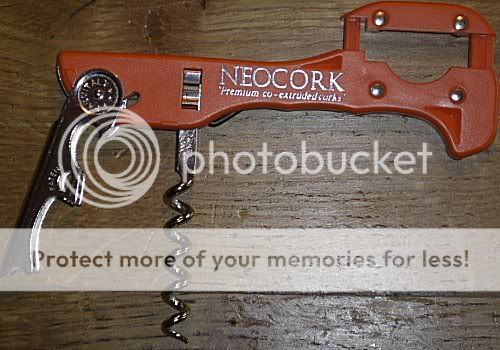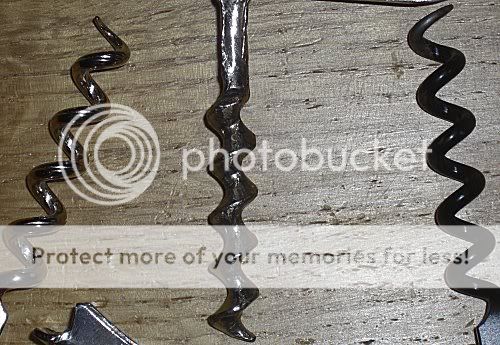Choosing a Corkscrew

Let’s talk corkscrews. Although screwcap closures are getting more popular I cannot foresee a time when there will not be the need to remove a piece of cork bark from a wine bottle.
This article was inspired by the site of a shredded closure when I arrive home from work. Jo needed a bottle of wine for cooking and I’d left an inexpensive Italian Merlot in the kitchen rack. She’d used an old corkscrew from the kitchen drawer but the closure – which was plastic refused to come out..” If you are reading this article on any site other than wine.bellaonline.com be aware that is has been ripped off. The writer is being deprived of revenue by this theft of copyright material. Please visit wine.bellaonline.com to read the rest of the article. Do not spend any longer here in the company of thieves. They may even now be downloading viruses and malware to your computer
One problem with plastic closures is that they tend to fit tightly and to be difficult get out but the problem here was the corkscrew. It was a type I call ‘helter skelter’. It has a solid core with a sharp spiral edge. I loathe this type. The solid core makes a hole in the cork and the spiral edge isn’t wide enough to get a good purchase. If the closure offers the slightest resistance then the corkscrew pulls out leaving a hole in the closure.

The picture above shows the helter skelter thread and the shredded plastic closure (which I later removed with the orange corkscrew shown below)
When buying a corkscrew take a good look at the screw. That is what is important. Whether is it a lever or ‘screwpull’ type it should have a wide hollow centre. This gives an unbeatable grip. It should also be long enough to handle a long cork. And for ease of use it should be coated with Teflon.
Over the years I have used a wide variety of bottle openers. The one that really scared me was the pump model. This had a long hollow needle that you push through the cork and then pump air into the bottle. The idea is that the increasing air pressure inside the bottle will force the cork out. There were warnings about not using it on bottle with wide shoulders – such as the then popular Mateus Rosé bottle as that could trap the air and shatter the bottle. And so could any weakness in the glass, I thought.#

Now I use a simple ‘waiters’ friend’. I have several and keep one in each of my suitcases. Pictured above and below are the ones I am currently using at home. The white one with its Teflon screw is used for all bottles except those with plastic ‘corks’. Because plastics strip Teflon off the screw I use the orange opener for those. That also has a handy foil cutter at the other end, whereas the first has a traditional – but not as easy to use – small blade.

And the helter skelter opener has been placed in the only place it is suited for. The waste bin.

Comparing the three threads
Peter F May is the author of Marilyn Merlot and the Naked Grape: Odd Wines from Around the World which features more than 100 wine labels and the stories behind them, and PINOTAGE: Behind the Legends of South Africa’s Own Wine which tells the story behind the Pinotage wine and grape.
The Pulltap The Pulltap corkscrew is the type I use. It is easy to use, easy to carry in a pocket and almost indistructible. And inexpensive! Highly recommended. | The Screwpull This was revolutionary. No pulling or levering, just keep turning the handle and the cork rises out of the bottle with no effort. This was the first to use Teflon coating. I have bought several of these in the past but in time, with the heavy use I give my openers, the plastic prong has broken. But I note that now they come with a five year guarantee. This opener is so easy to use. Highly recommended |

Related Articles
Editor's Picks Articles
Top Ten Articles
Previous Features
Site Map
Content copyright © 2023 by Peter F May. All rights reserved.
This content was written by Peter F May. If you wish to use this content in any manner, you need written permission. Contact Peter F May for details.


